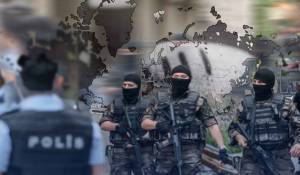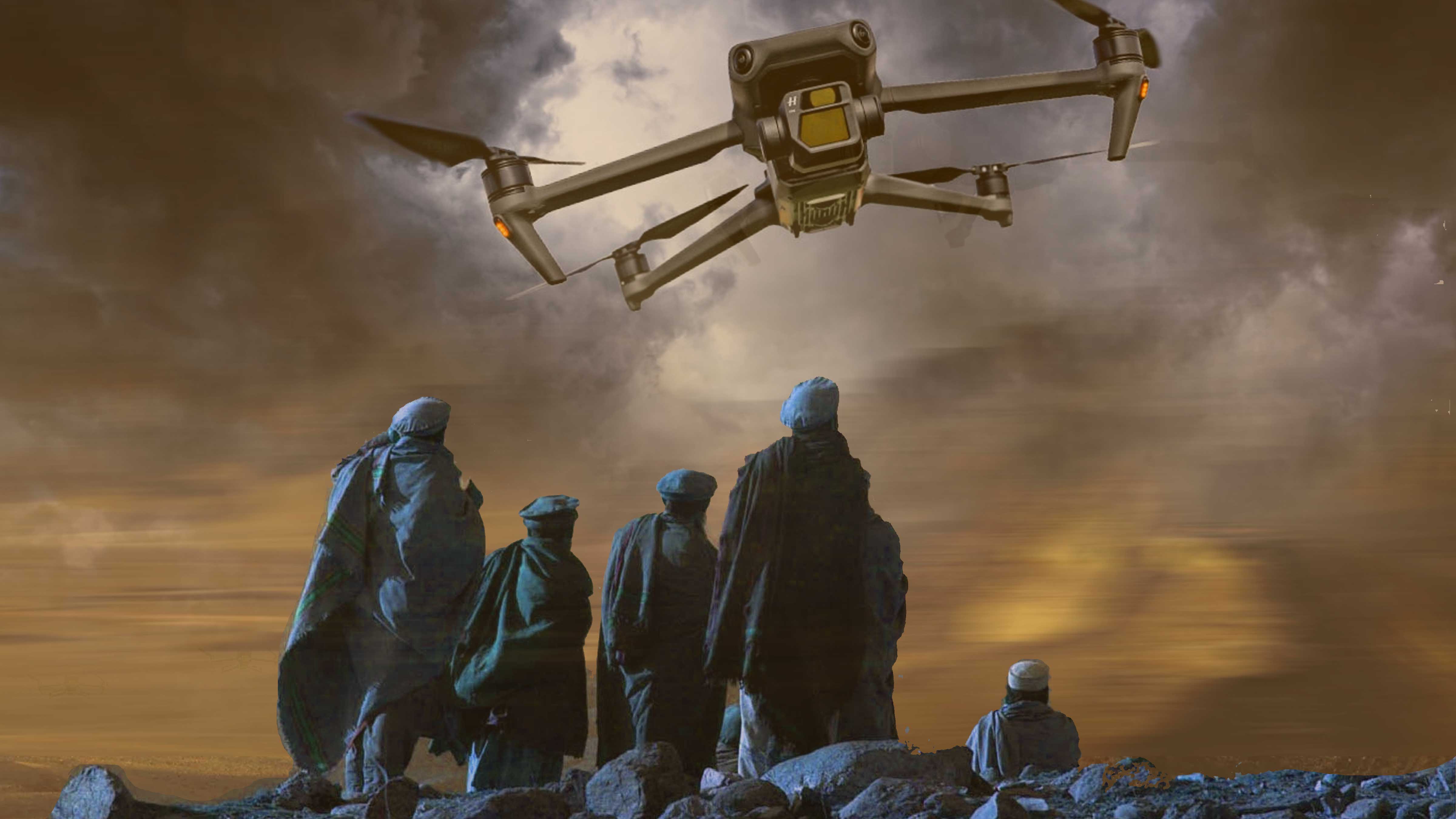
Iftikhar Firdous

January 07, 2026
By | Iftikhar Firdous

There have been at least 6 suspected attacks in the last two months in North Waziristan tribal district, Khyber Pakhtunkhwa which officials believe were “Quadcopter Borne IEDs” targeting security facilities and transport.
“Although it has not had much of a physical impact in terms of damages, the development is worrisome,” at least two senior security officials told The Khorasan Diary. This is the first-ever acknowledgement of UAVs being used in militancy within Pakistan.
The attacks have been mainly concentrated in the areas of North Waziristan district, in areas Mir Ali and Miranshah, the officials elaborated. “we recovered pieces of the quadcopter when on September 3 2024, two petroleum company vehicles were attacked”.
“The technology is still very nascent and seems to be locally assembled, where a bottle filled with explosives between 400 to 700 grams are tied to a quadcopter and detonated with grenades,” said a source who was part of the investigation to collect forensic evidence. “To add to its lethality nails and ball bearings are added, much like the kamikaze,” the source added.
Forensic analysis shows that the quadcopter drones are manufactured by Da-Jiang Innovations (DJI), a Chinese company that manufactures drones. No militant group has formally claimed the usage of drone technology.
History of Drone Warfare
The use, and attempted use, of UAVs by terrorists and insurgents can at least be dated back to the pre-June 1994 attempts by the Japanese apocalyptic cult Aum Shinrikyo [1] to conduct dry runs to release the nerve agent sarin through remote-controlled helicopters with aerial spray systems [2]
The attempts failed as the mini-helicopters crashed during testing, with that terrorist group going on to utilize different dispersal methods when they launched their sarin at-tacks on a Matasumoto courthouse and later on the Tokyo subway system. The latter attack resulted in about a dozen people killed and 5,500 injured by this nerve agent [3].
The next incident related to UAV threatened use was that of a pre-July 2001 improvised explosive device (IED) attack upon G8 Summit leaders (Canada, France, Germany, Italy, Japan, Russia, the UK, and the United States) in Genoa, Italy, by Al-Qaeda. This plot may have only entered the “what if” stage of conceptualization with Osama bin Laden musing about its potential as discrepancies exist regarding whether the plot was ever put into place.
Two more Al-Qaeda-based plots followed: one pre-February 2002 originating out of Pakistan, and the other in June 2002 from an unspecified location. The first plot tied to Mozzam Begg sought to launch a drone filled with anthrax against the English House of Commons. He was sent to Guantanamo Prison for his involvement but was later released from custody in January 2005 because the original charges became questionable. The second plot revolved around IED-carrying remote-controlled planes being utilized against passenger airlines—though the plot was never said to get beyond the concept stage [4][5].
Two Pakistani terrorist group-linked incidents then took place on September 13-14, 2005. In the first, the Pakistani Army raided an Al-Qaeda hideout in North Waziristan. In the raid, they seized a Chinese-made remote control model airplane which was said to be used for the reconnaissance of Pakistani security forces before attacking them. IED weaponization potentials of this model aircraft were also mentioned [6]. The next day, Ala Asad Chandia (Abu Qatada) was arrested in Fairfax County, VA, for obtaining an MP 1OOOSYS electronic automatic pilot system for model aircraft. This Lashkar-e-Taiba-trained individual was federally indicted and subsequently convicted for attempting to send this technology to that terrorist group for its drone use in Pakistan [7].
Between 2006 and May 2012, two Al-Qaeda incidents and one Taliban UAV incident occurred. In Columbus, Ohio, during the 2006-07 period (exact dates unspecified), Al-Qaeda-trained Christopher Paul was conducting drone research, utilizing a 5-foot-long model helicopter, for terrorism purposes. He was arrested by the Federal Bureau of Investigation (FBI) in August 2007 and was subsequently convicted in June 2008 (he took a plea deal that resulted in a shorter sentence).
In the next incident, which took place on September 28, 2008, Rezwan Ferdaus—an Al-Qaeda affinity adherent—was arrested by the FBI in Ashland, MA. He was caught in a terrorist sting operation related to his plot to drive F-86 Sabre and F-14 Phantom scale models (with Global Positioning System [GPS] capability) loaded with C-4 explosives into the Pentagon and Capitol buildings. He was convicted for this plot in 2012 and also took a plea deal, like Paul, for shorter sentencing purposes [8].
The Islamic State (IS) joined the nonstate threat drone proliferation club with three successful UAV operations in August and September 2014. The first incident was on August 23, 2014, near Raqqa province in northern Syria. It involved the use of a commercial system—a DJI Phantom FC40 quadcopter—to recon Syrian Army Base 93 prior to an IS ground assault on the base. The quadcopter video imagery was subsequently used in IS propaganda videos [9]. On August 30, 2014, an unspecified IS drone was used over Falluja, Iraq, to provide imagery of attacks on the city for online propaganda purposes [10]. In the last IS operation on September 12, 2014, in Kobani, Northern Syria, another unspecified drone was used to capture video imagery of suicide bombers and ground attacks on that city for propaganda purposes [11].
For global and regional jihadist groups, including the Pakistani and Afghan Taliban, drones have long been an operational nightmare, posing a persistent threat to their top leadership underscoring their lethal effectiveness in counter-terrorism operations. To utilize Drones’ operational effectiveness, jihadists have actively sought to acquire the technology for use against their adversaries.
In this region, the Afghan Taliban, now governing Afghanistan, initiated its usage as their first reported drone strike occurred in November 2020, targeting the Kunduz governor's residence which resulted in at least four deaths and eight injuries. This incident marked the commencement of their drone operations, which had then expanded to eastern and northern provinces, targeting former Afghan republic forces and officials.
In 2024, the Islamic State Khorasan province published two booklets showcasing quadcopters and how to use them in attacks [12].
Proliferation of Drone Warfare
While the initial usage of newly acquired drones with lesser capacity might be a phenomenon limited to the border areas of Pakistan, officials fear that with the proliferation and use of drones in Urban areas it will become a more difficult problem to control. “If an individual gets a phone call for extortion, as is the norm with militant organizations extorting money, and they are told that if they do not pay a drone loaded with explosives is outside their window – what will be the state's reaction?” a security official with direct knowledge of the inquiry into the incidents questioned.
A Pakistani Taliban affiliate showed ignorance and said, “This seems difficult as I don't think any of us have the technology.”
Citations:
[1] Terrorist and Insurgent Unmanned Aerial Vehicles: Use, Potentials, and Military Implications Robert J. Bunker, Claremont Graduate University, 2015
[2] See Gips; and James M. Smith, “Aum Shinrikyo,” Eric A. Croddy, James J. Wirtz, and Jeffrey A. Larsen, eds., Weapons of Mass Destruction: An Encyclopedia of Worldwide Policy, Technology, and History, Santa Barbara, CA: ABC Clio, 2005, p. 32.
[3] Before the March 1995 subway attack, an earlier sarin gas attack occurred in Matsumoto in June 1994 when the agent was placed in the back of a truck—likely this was the actual attack in which helicopters would have been used had they not failed in testing. See Kenneth Pletcher, “Tokyo Subway Attack of 1995,” Encyclopedia Britannica, November 2, 2014, available from https://www.britannica.com/event/Tokyo-subway-attack-of-1995
[4] Eugene Miasnikov, Threat of Terrorism Using Unmanned Aerial Vehicles: Technical Aspects, Moscow, Russia: Center for Arms Control, Energy and Environmental Studies Moscow Institute of Physics and Technology, 2005, p. 26; and Testimony of Dennis M. Gormley, Senior Fellow, Monterey Institute’s Center for Nonproliferation Studies, Before the Subcommittee on National Security, Emerging Threats, and International Affairs of the U.S. House of Representatives Committee on Government Reform, March 9, 2004, available from https://www.armscontrol.ru/UAV/report.htm
[5] Miasnikov. The notation is “In June 2002, quoting a German intelligence official, the Reuters news agency reported that al Qaeda might be planning to attack passenger aircraft using model aeroplanes.” Cited by Gips.
[6] Riaz Khan, “Pakistan Army Destroys al-Qaida Hide-Out,” Free Republic, September 13, 2005, available from www.freerepublic.com/focus/fnews/1483677/posts
[7] United States v. Ali Asad Chandia, also known as Abu Qatada, and Mohammed Ajmal Khan, also known as Abu Khalid. Indictment. Criminal No. 1:05CR401, The United States District Court of Virginia, Alexandria Division. Filed September 14, 2005.
[8] See Peter Finn, “Mass. man accused of plotting to hit Pentagon and Capitol with drone aircraft,” Washington Post, September 28, 2011, available from https://www.washingtonpost.com/national/national-security/mass-man-accused-of-plotting-to-hit-pentagon-and-capitol-with-drone-aircraft/2011/09/28/gIQAWdpk5K_story.html
[9] Peter Bergen and Emily Schneider, “Now ISIS Has Drones?” CNN News, August 25, 2014, available from https://www.cnn.com/2014/08/24/opinion/bergen-schneider-drones-isis/index.html/; and Yasmin Tadjdeh, “Islamic State Militants in Syria Now Have Drone Capabilities,” National Defense, August 28, 2014, available from https://www.nationaldefensemagazine.org/articles/2014/8/28/islamic-state-militants-in-syria-now-have-drone-capabilities
[10] Scott Shane and Ben Hubbard, “ISIS Displaying a Deft Command of Varied Media,” International New York Times, August 30, 2014, available from https://www.nytimes.com/2014/08/31/world/middleeast/isis-displaying-a-deft-command-of-varied-media.html
[11] John Hall, “ISIS Propaganda, Call of Duty-Style: Latest Footage Shows Drone’s View of Battle-Ravaged Streets of Kobane before Swooping in to Show Gun Battles on the Ground,” Daily Mail, December 12, 2014, available from https://www.dailymail.co.uk/video/news/video-1143590/ISIS-drone-video-appears-fighting-Kobane.html
[12] The Khorasan Diary, Islamic State Supporters Launch New Magazine Focused on Drone Warfare https://thekhorasandiary.com/en/2024/04/29/tkd-monitoring-islamic-state-supporters-launch-new-magazine-focused-on-drone-warfare , April 29, 2024.